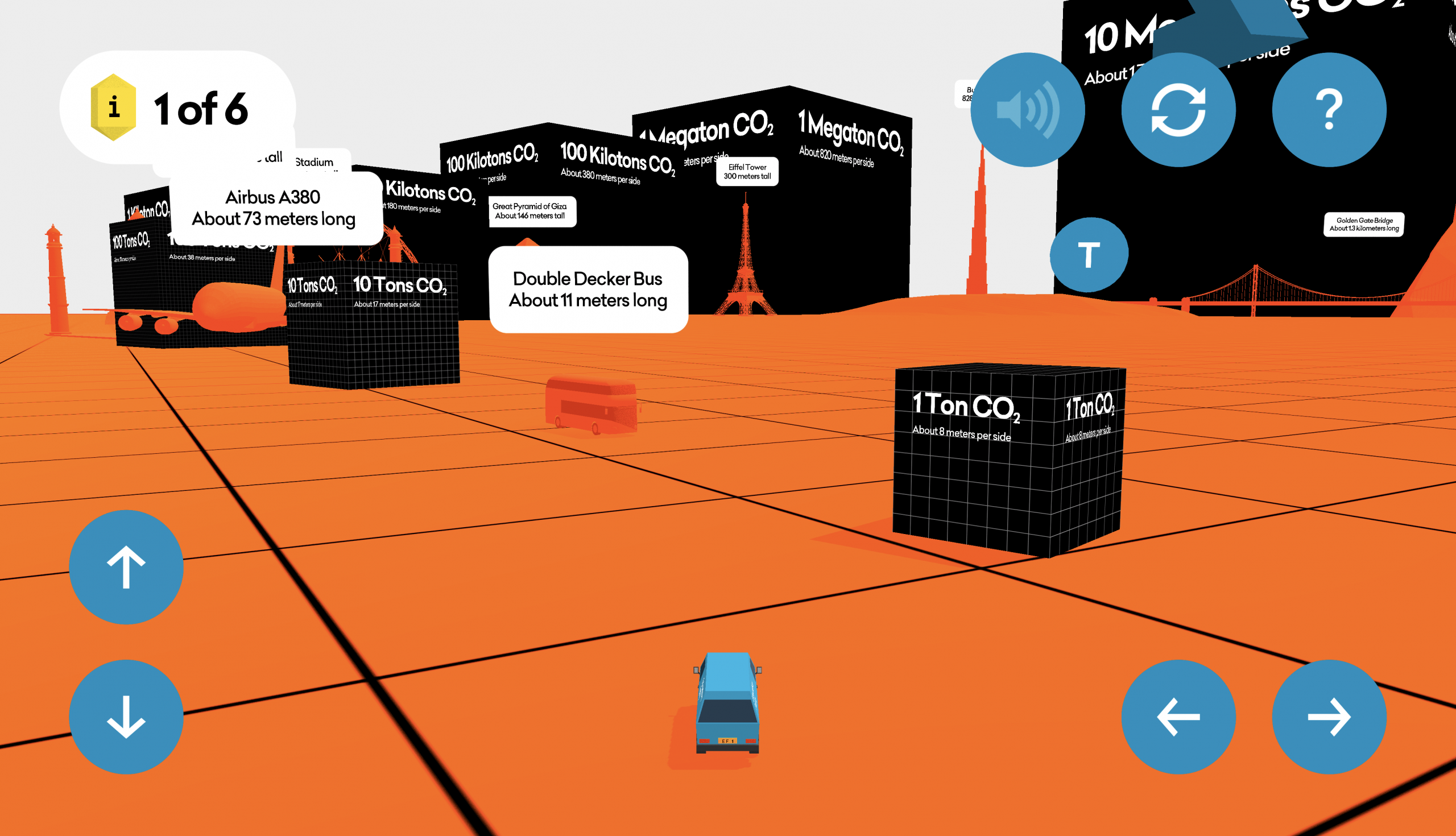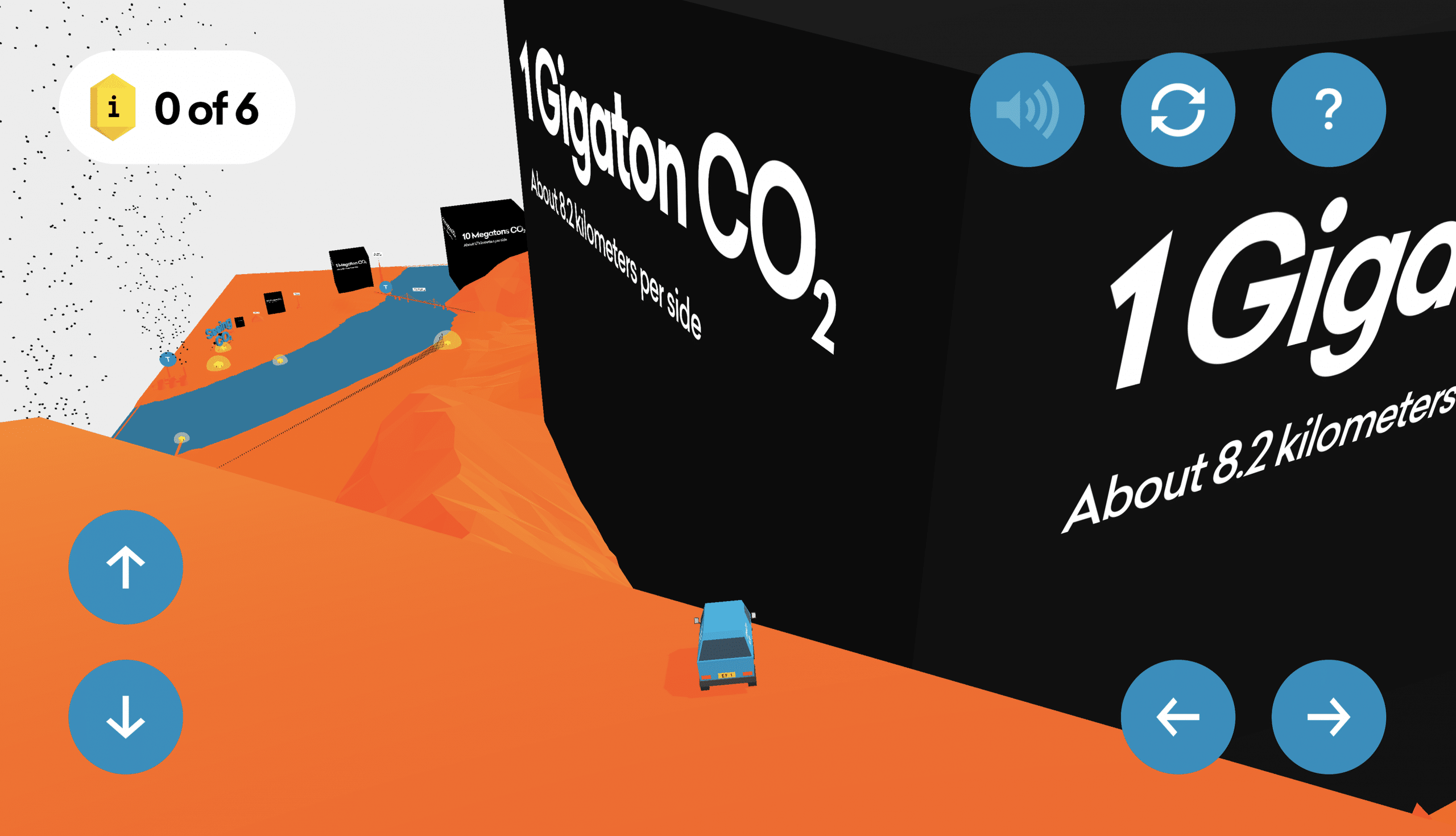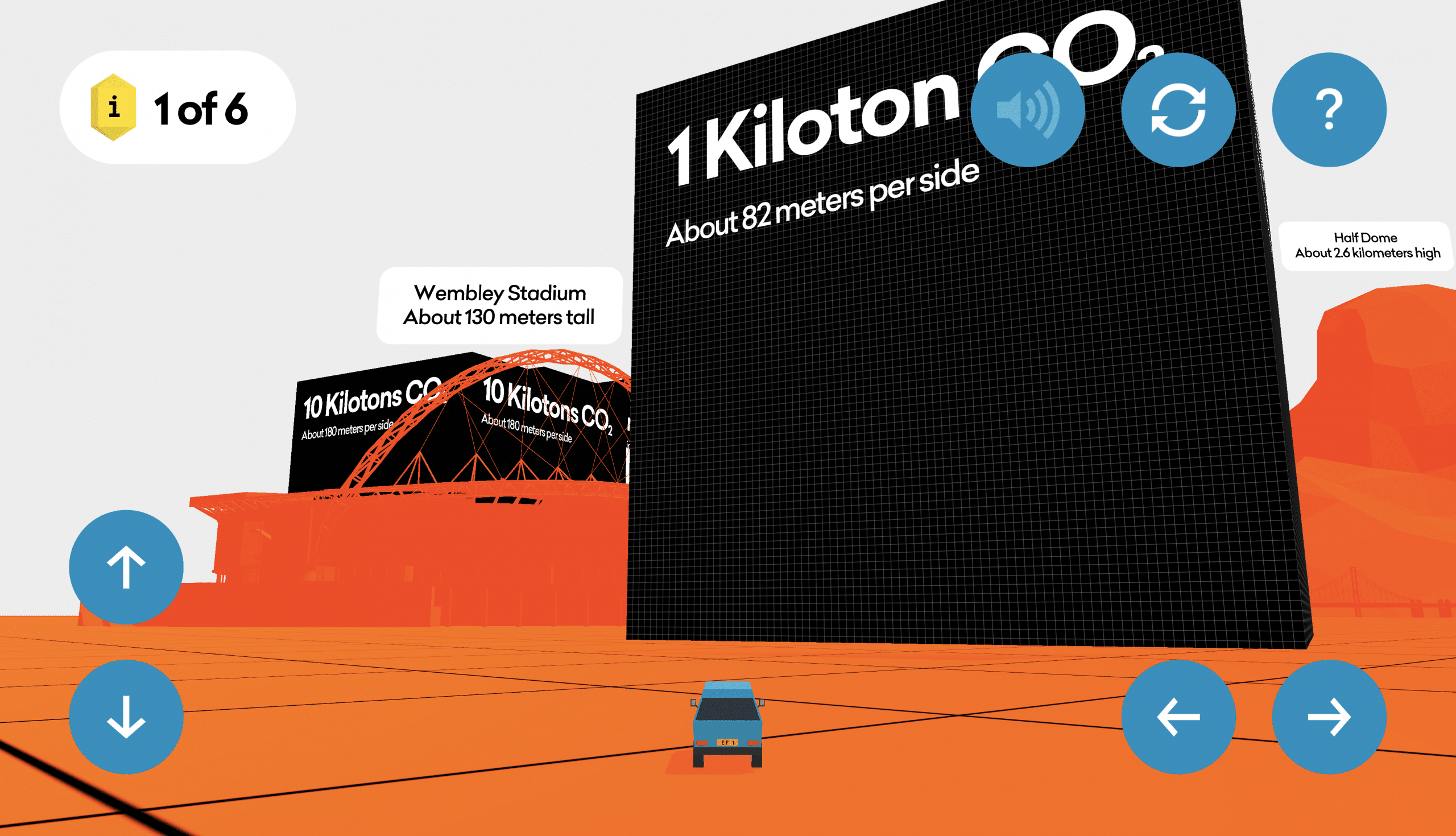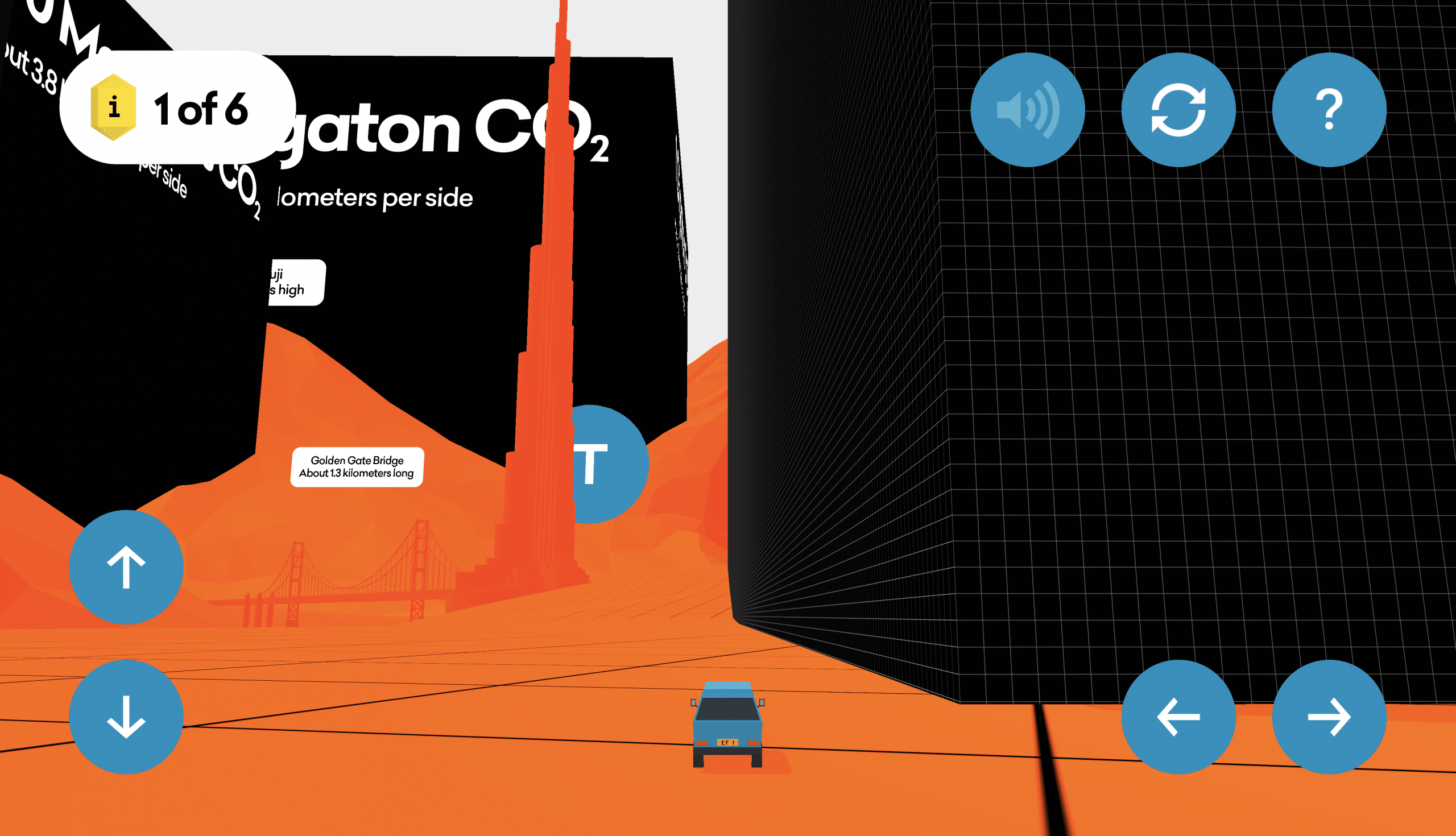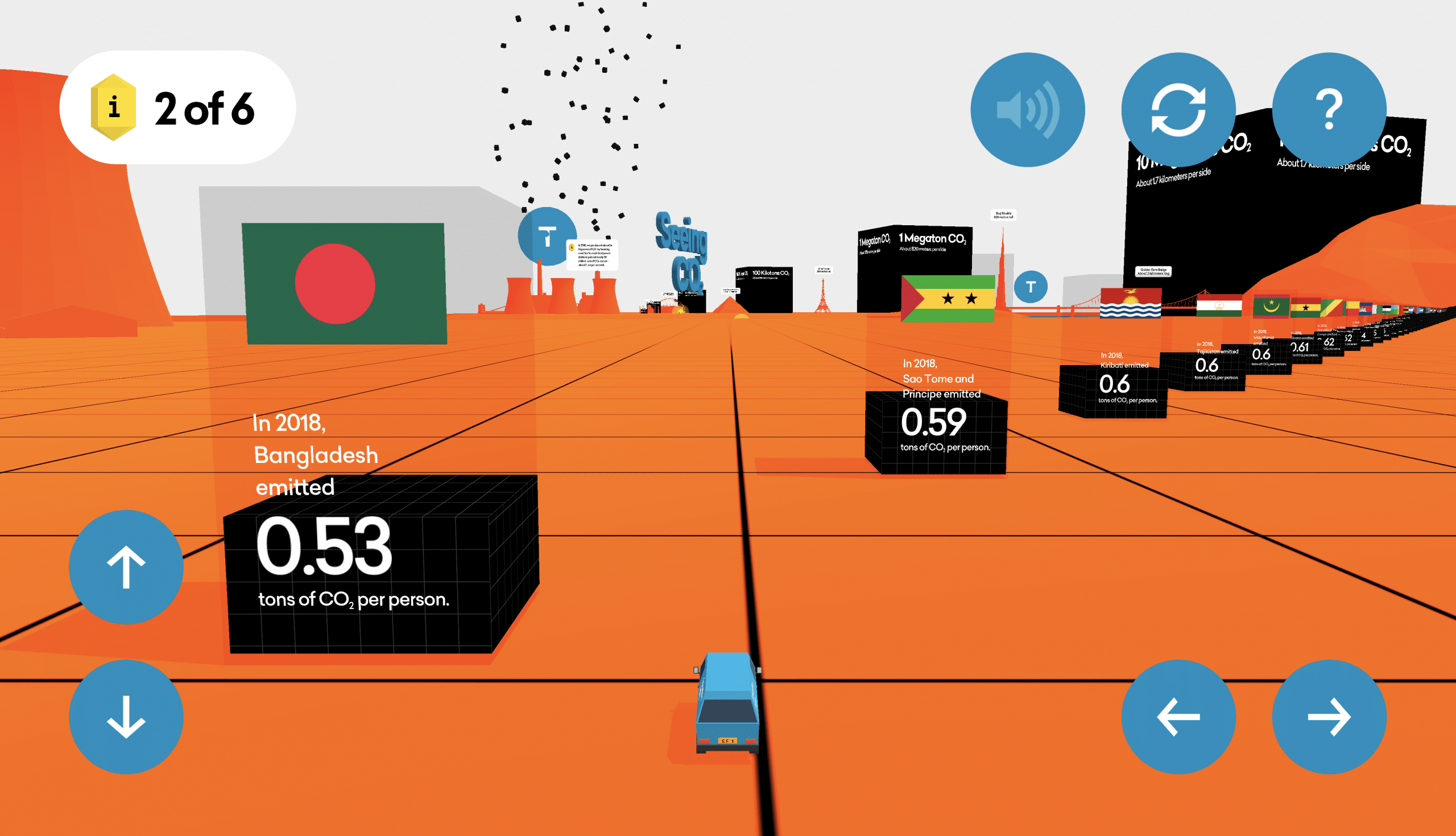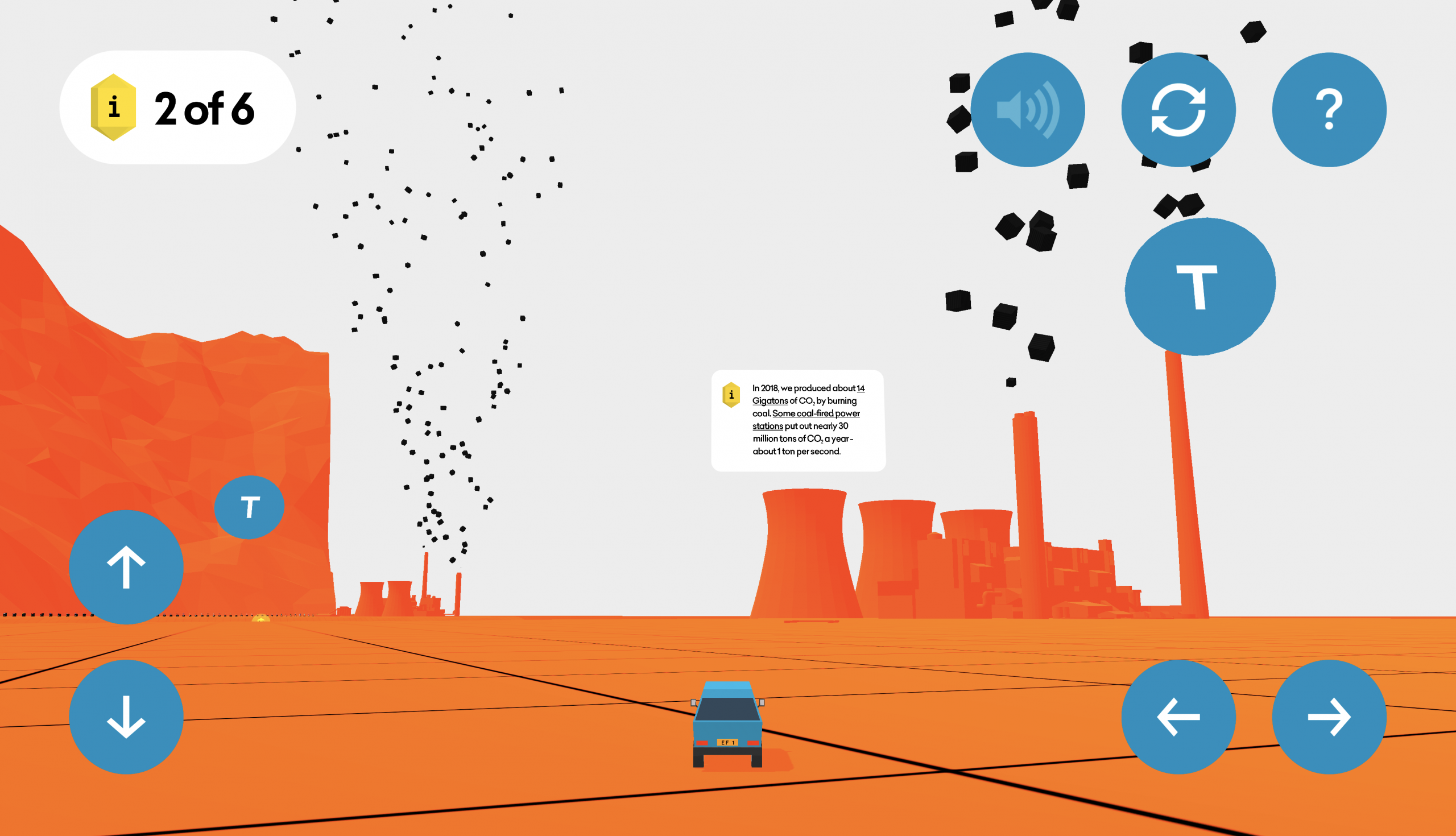January 2021
This is an exploratory studio project that looks at data visualization through the lens of play.
Experimental WebGL – modern browser and beefy processor recommended.
What if Isotype, but Fortnite?
In 2019, we pumped about 35 gigatons of carbon dioxide into the atmosphere. What does that actually look and feel like?
The prototype sees us in a game world, setting off in a little blue van to explore a landscape dominated by massive black cubes. All of these cubes – each one ten times bigger than the last – visualize the physical volume of carbon dioxide, from one to one billion tons.
The camera perspective we instantly associate with video games is purpose-built to show scale in hugely visceral ways. From a distance, we see that a cubic gigaton of carbon dioxide is about the same height as Mount Everest. But how big does that feel ? Well, why not drive (or teleport) to the top and find out?
Game worlds also let us explore macro and micro simultaneously. Each cube of CO2, from 8 meters across to 8 kilometers across, is wrapped in a one-meter scale grid, a nod to the Isotype method of representing quantity using multiples of one unit. The little blue van acts as a constant scale reference – an everyday, familiar size and shape that we can compare to the landscape around it.
The prototype plays with other ideas too, like an ‘actual size’ bar graph of the world’s per-capita emissions, where the dimensions of each bar show the actual volume of CO2 they represent…
…and a power plant that spits out one cubic ton of CO2 every second, roughly the rate of Bełchatów Power Station in Poland.
Experimental WebGL – modern browser and beefy processor recommended.
The added benefits that games can bring to learning are well-known, but in recent years, perhaps we’ve seen a few important shifts in context. As well as playing games in the classroom, kids are now building classrooms inside their favorite games. What will this world look like in the next decade? What if we brought more of the spirit of Isotype to the culture of Fortnite, and vice versa?
Designing humane, convivial tools and toys is core to what Extraordinary Facility does. Building prototypes like this lets us dive into the cultural constructs of learning and play, and use them to reimagine the products, services and media that surround us. If you’d like to know more about how the studio works, get in touch!
